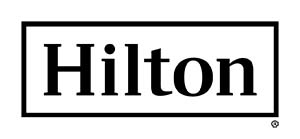
The team at Hilton has come up with a realistic approach to help event planners navigate an uncertain future.
The past two years have presented a series of obstacles for the events industry, and 2022 continues to be particularly challenging. Event organizers are adapting to a more distributed workforce, mitigating burnout, working hard to attract and retain talent, and navigating ongoing volatility in the national and international markets. Despite the difficulties, business travel and in-person events are rebounding. Hilton’s team has taken a grounded and realistic approach to help planners of all types face the future head on. Here are key changes Hilton has identified — and ways to manage them.
Face-to-Face Events
In-person meetings are back, and just at the right time. Since the beginning of the pandemic, 30 percent of U.S. workers report feeling less deeply and meaningfully connected to their organizations, and 44 percent say they feel less connected to their coworkers, according to the HOW Institute for Society’s 2021 “Human Connection in the Virtual Workplace” study. To address this in a largely remote and virtual work environment, organizations are seeking out off-site events and team retreats as important opportunities to spark motivation, combat disconnection, and inspire a sense of belonging for employees and members. Face-to-face events are a meaningful way to reinvigorate company cultures, refocus business goals, and jump-start their business in this new reality.
Venue and Room Rates
With summer travel demand soaring, hotel rates have risen as well, with a further 10-percent rise projected in 2023, according to CWT and the Global Business Travel Association’s Global Business Travel Forecast. Rising labor, food, and fuel costs are also contributing to these increased rates, with product shortages and shipping delays also a factor — scarcity of consumer goods drives up inflation and operating costs. Now more than ever, industry partners and stakeholder relationships are key in helping attendees and customers understand the economic impacts they are experiencing within the industry.
Hotel Transparency
The pandemic has altered the way hotels structure some of their offerings relating to staffing models and supply-chain issues. This year, many hotels offer a different scope of services than pre-pandemic, including evolving F&B options, updated service hours, and service-level adjustments, such as changes to room service, housekeeping, restaurant availability, and hours of operation for recreational facilities. Given these changes, hotels keep the lines of communication open with planner partners about changes to the hospitality experience. In turn, planners should manage their attendees’ expectations by communicating early and often before and during events.
Event Space Availability
The increase in face-to-face events has resulted in limited or nonexistent event space availability in 2022. Hilton’s current demand for in-person meetings has surpassed 2019 volumes, which indicates that recovery to pre-pandemic occupancy levels isn’t far behind. Hilton properties located in year-round warmer climates such as Florida, Louisiana, Las Vegas, and Arizona were the first to return in both RFP demand and in-person meetings, while demand for locations such as New York, Chicago, and San Francisco has grown exponentially since early 2022, yet still has booking availability for the remainder of the year. To manage this, organizations should consider sourcing venues, services, and vendors earlier than in years past to increase the likelihood of executing events when and where they want their first-choice destinations.

